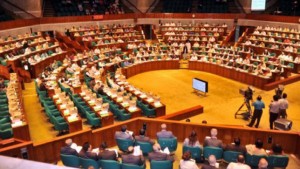by Carlo Spagnolo on 22nd April 2020
Decades of neoliberal inculcation have deprived the political class of the historical memory needed to derive the new Marshall plan today’s crisis demands.
A hope is haunting Europe—the hope of a Marshall Plan for economic recovery. After World War II, the formally titled European Recovery Programme (ERP) was a United States aid programme meant to co-ordinate several others working in parallel. Amid booming postwar growth and high inflation—and fear in America that western Europe was tilting towards Communism—in 1947 high foreign debt and lack of dollars threatened paralysis of payments and international trade.
US assistance from 1947 to 1951, amounting to about 2 per cent of its gross national product, allowed the 17 European beneficiary countries to co-ordinate and slowly reduce their exposure to creditors. The tight rules of the International Monetary Fund, arising from the 1944 Bretton Woods conference, were suspended and protectionism tolerated. Ninety per cent of aid came in bulk goods—food, wheat and coal mostly, with some industrial product and a few raw materials—with the remaining 10 per cent in industrial loans.
Political co-operation gradually eased the task of European central banks, which eventually set up the European Payments Union in 1951. Six of the assisted countries formed the European Coal and Steel Community in 1951, before establishing the European Economic Community in 1957.
The Marshall plan was a visionary political initiative: it helped former enemies and ended the spiral of vengeance between winners and losers. It injected trust in a market trapped in the war legacy and earned time to sew the fabric of international free trade ripped apart by the 1929 Wall Street crash. It integrated the industrial areas of the ‘west’, including West Germany and Japan, within a growth strategy.
Challenging widespread opinion, the ERP helped restructure the instruments of state intervention in the economy and put them at the service of interdependence. The western-European economy, however reluctantly, took the American model of high productivity, high wages and high consumption as a political reference point.
Model lacking
Today a programme of public expenditure would have very different features. Who should deliver it? We lack a political hegemon, such as the US, led at that time by Harry Truman and a bipartisan coalition willing to universalise its way of life. We lack, critically, a social and sustainable model of growth. We lack a common enemy—the adversaries are within, with two camps having emerged in the European Council. And there is nothing comparable to the Bretton Woods design, which provided an institutional framework to govern what today we call ‘globalisation’.
Would it be possible to get out of the crisis just by relaunching an export-oriented model of growth which was already stagnating for at least 20 years? Signals of the crisis have recurred constantly since the 1990s, always assuaged through liquidity injected by central banks. The most serious was in 2007-08 but others came before it. Globalisation has become impetuous and unbalanced. The quantum of growth we had in the European Union was towed by Asia and not by internal investment.
The distraction from the social foundations of growth has fed unresponsive political opportunism—we have a political class in Europe focused on tactics with no strategy. If the Marshall plan succeeded, it was not through its inherent economic virtues but the political capacity of its leading actors to use it as an opportunity for democratic growth: notwithstanding the ERP’s favour for the ‘free market’, the social pact which supported the European welfare state was retained. Economic and democratic development, with an anti-Communist twist, were not perceived as separate.
Today we lack a diagnosis of the crisis which puts it in historical perspective. The shortsightedness of the political class has to do with a neoliberal ideology which has wiped out serious history from its training, thus cutting its temporal horizon. Many are the historical reasons for a European stagnation which mere liquidity cannot resolve while papering over the cracks.
Twofold target
Given the different context today, we should rather speak of a Mario Draghi plan: the former president of the European Central Bank is the only credible figure for a new ‘whatever it takes’. The proposition Draghi recently advanced in the Financial Times has a twofold target: to save the market from long-term depression and to prevent the short-term collapse of firms.
The paradox of public debt to finance a capitalist recovery is exactly that of the New Deal and the Marshall plan. The Draghi plan suggests unlimited credit to the existing economy, while the financial system and the social contract would undergo deep tensions.
Questions arise. Could even a project of such breadth prove inadequate, in the absence of a democratic power which can discipline the markets and steer them towards a new concept of the wealth of citizens? And if the Draghi plan could be decisive for the survival of the EU in this emergency, could it also sustain parasitic mechanisms, as feared by Germany? A guarantee against this risk should be provided.
At the height of the current crisis, a balanced model of production and consumption cannot arise without political design. Reform of the financial system, which has proved unable to provide liquidity to the real economy and support the wealth of citizens, may be inescapable. Meanwhile, investing in the future of the planet and in balanced social growth does not belong to the logic of markets.
Let’s raise the hypothesis that the EU—with a strong role for the European Parliament—can provide the desired direction for an investment plan. Let’s set aside the doubts on the long-term vision of the political classes: the tactician Angela Merkel could open a window.
Someone should remind the Kanzlerin and the Bundesbank that a West German state was made possible by the Marshall plan, that German state debt was cleared by the western allies in 1948 to free the new Deutschmark from excessive burdens and that war reparations were handled very generously by ERP countries. There is an historical obligation with which Germany should morally engage in today’s crisis.
What would a Draghi plan mean for the EU?
Picture altered
As the GNP of the 27 member states, at constant prices, amounted in 2019 to about €13.9 trillion and that of the euro area of 19 countries to about €11.9 trillion, an ERP equivalent of 2 per cent means mobilising €240-280 billion euro—an order of magnitude greater than the reshuffled resources of the EU budget set at €20-30 billion per year for the green investment plan announced in January by the president of the European Commission, Ursula van der Leyen.
The Covid-19 emergency has altered an already grim picture and the forecast is of an EU average crash of 6-7 per cent and in some countries almost 10 per cent of gross domestic product. The needed sum, therefore, appears much higher, four of five times that for the Marshall plan—let’s say at least €1 trillion to save Europe from indefinite recession.
The first question is: who should bear the burden? At the European Council of March 26th, the division hinged on the issue of responsibility—the EU or the member state. The coalition we could call the German bloc is asking that states act individually. Germany has already committed about €170 billion of fresh state resources, and guarantees from the KfW state development bank for about €400 billion, reserved to its internal economy. On the other hand, debtor states cannot afford the risk of a financial crisis at the end of the emergency and demand rather Eurobonds and EU responsibility.
The compromise reached by the Eurogroup on April 9th would not stabilise the most indebted states after the emergency. It is unclear how far the ‘recovery plan’ which is on the European Council agenda on April 23d can fill the gap through the leverage of a small EU budget.
It seems that a short-sighted politics is splitting the EU on the question of who pays. Perhaps the EU should not break on it in light of the ERP experience—controversies on burden-sharing and conditionality were not lacking then either. The European Central Bank went a long step forward on March 26th by lifting limits to state debt purchase, up to €750 billion, and its current president, Christine Lagarde, has committed to purchasing up to €1 trillion of private and public bonds to the end of this year.
In such a scenario, given European interdependence, the German solution—leaving the main effort to states—could become acceptable. But this would require that the Stability and Growth Pact fiscal rules were suspended until a robust recovery was in place (this took ten years with convertibility under the ERP) and that extraordinary expenses by all states were guaranteed by a common mechanism, which overcame for recipients the politically suicidal automatic conditionality of the European Stability Mechanism.
Some sort of temporary virtual currency can be provided by an array of tools: the Eurobond or some equivalent, provision of liquidity to banks, ‘helicopter money’, a long-term irredeemable loan with an ECB guarantee, state debt purchase by the ECB, a fund under the European Investment Bank for co-ordinating investment, and so on.
Structural crisis
So much ado about countercyclical policy prevents a focus on the essential, for this is the last episode of a long structural crisis. Crucial is the co-ordination of expenditures: neither the market nor individual states can do without a common strategy of investment for long-term social and environmental sustainability. An EU plan for recovery must be drafted to make Europe less dependent on foreign markets and external shocks.
In 1948 the Organisation for European Economic Co-operation, which co-ordinated ERP countries, wrote a long-term plan which—though considered by some historians a statistical exercise-oriented western Europe towards ‘economic viability’. The Marshall plan did not always work well, it changed over time and it was brusquely interrupted by rearmament. A transnational compromise between the state and the market became possible because of the fear of Communism and the memory of war. Nowadays the foe is temporary and anonymous—it is perceived as a sanitary-bureaucratic issue and not as a political one.
A Draghi plan might rescue the euro area but can it stabilise Europe without restructuring its capitalist system? On this issue, political courage seems faltering. The crisis provides room for a choice between a much tighter grip of capitalism on individuals and an inclusive democratic programme: together with the Draghi plan, a new Beveridge plan for welfare?
Without a brave political strategy, the legacy of the Marshall plan will be lost. Either the EU or its democracies will die choked—and not by the coronavirus.
(Carlo Spagnolo is professor of contemporary history at the University of Bari and Jean Monnet Chair of the history and politics of European integration.)




